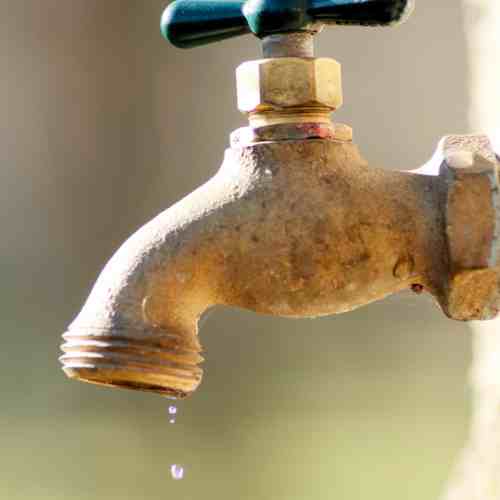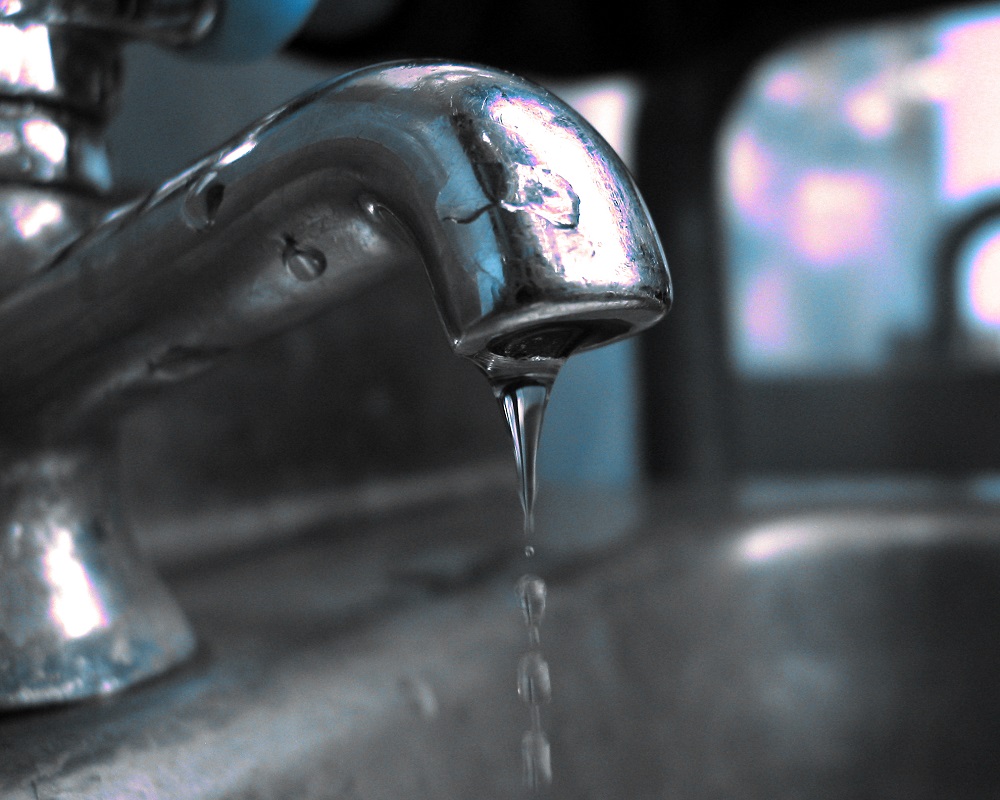Impacts of a Busted Faucet
Impacts of a Busted Faucet
Blog Article
Any individual is bound to have their own unique opinion in relation to The Environmental Impact of Leaky Faucets.

Introduction
A dripping faucet might feel like a minor annoyance, yet its repercussions extend much beyond the periodic drip. Comprehending the effects of a dripping faucet is crucial for both house owners and the environment. In this post, we'll check out the numerous impacts of this usual household problem and why resolving it promptly is vital.
Causes of Leaky Faucets
Leaky faucets can arise from a selection of factors, including deterioration, high water stress, and deterioration. Over time, the continuous use taps can cause damaged seals and gaskets, creating leaks to develop. Additionally, extreme water pressure can put strain on plumbing fixtures, leading to leakages. Deterioration and corrosion can likewise compromise faucet parts, making them prone to leakage.
Water Wastefulness
Among the most significant effects of a leaking faucet is water wastefulness. Also a small drip can amount to gallons of wasted water over time. This not just drives up water costs however additionally adds to water shortage and ecological deterioration. Addressing leaking taps quickly is critical for saving this priceless resource and lessening its impact on the world.
Financial Influence
Along with wasting water, leaking taps can likewise have a substantial financial impact. Boosted water costs are a straight consequence of water wastage, costing house owners thousands of bucks every year. Moreover, the expense of fixing water damages triggered by leakages can be considerable, particularly if left neglected for a prolonged period.
Ecological Influence
The ecological impact of dripping faucets expands beyond water wastefulness. By saving water, property owners can add to wider initiatives to alleviate water scarcity and shield natural environments. Lasting choices such as rain harvesting and water-efficient components can better lower the ecological impact of household water use.
Technical Solutions
Innovations in technology have actually brought about the advancement of smart faucets and water-saving devices that aid decrease water waste. Smart taps use sensing units to detect motion and readjust water circulation appropriately, decreasing waste without sacrificing ease. Water-saving gadgets such as aerators and low-flow showerheads are also reliable in saving water without compromising efficiency.
Global Viewpoints
While leaky taps may appear like a localized concern, they contribute to broader worldwide challenges such as water shortage and environment change. In areas already dealing with water stress and anxiety, every drop counts, making leakage prevention and repair work necessary. By taking on water-saving methods and buying sustainable modern technologies, house owners can play their component in addressing these pressing worldwide issues.
Regulatory Steps
Government policies play an important role in minimizing the effect of dripping taps and advertising water preservation. From developing codes that need water-efficient components to water-saving motivations and refunds, policymakers have a variety of tools at their disposal. By executing and applying these laws, governments can ensure that house owners prioritize water preservation in their lives.
Area Impact
Addressing dripping faucets calls for collective initiatives at the area degree. By increasing understanding about the importance of water preservation and giving sources for leakage discovery and repair service, regional authorities can empower property owners to take action. Efforts such as water-saving discount programs and leak detection campaigns can incentivize actions change and advertise liable water usage.
Case Researches
Real-life instances of the effect of leaky taps highlight the significance of proactive upkeep and timely repair work. From water damage to increasing water costs, the repercussions of overlooking leakages can be serious. By sharing these study, home owners can better understand the relevance of addressing leaky faucets quickly.
Educational Campaigns
Educational campaigns play a critical role in raising awareness about the effects of leaky faucets and promoting water conservation techniques. Via workshops, workshops, and on-line sources, house owners can discover exactly how to detect and fix leakages themselves. By equipping individuals with expertise and devices, academic campaigns can cultivate a culture of accountable water usage within areas.
Wellness Worries
Leaking faucets can develop favorable environments for mold and mildew and mildew development, posturing health and wellness risks to occupants. The visibility of mold can aggravate breathing issues and allergic reactions, particularly in at risk individuals. In addition, water damage arising from leaks can jeopardize the architectural integrity of structures and lead to expensive repairs.
DIY vs. Expert Repair
When faced with a leaking tap, homeowners typically dispute whether to try repair services themselves or work with a specialist plumber. While do it yourself repair services can conserve money, they may not always address the underlying concern properly. Specialist plumbings have the competence and devices to diagnose and fix leakages properly, making sure long-term solutions and satisfaction for house owners.
Preventive Measures
Preventing dripping taps requires normal maintenance and aggressive steps. Straightforward tasks such as changing worn-out washing machines and seals can prevent leakages from developing. In addition, upgrading to premium components and decreasing water stress can aid lengthen the life-span of faucets and decrease the danger of leaks.
Final thought
To conclude, the effects of a dripping faucet extend much beyond the occasional drip. From water wastage and boosted water costs to wellness problems and ecological effect, the consequences of overlooking leaks can be significant. By addressing dripping taps immediately and adopting water-saving techniques, house owners can mitigate these impacts and add to a more sustainable future.
Why You Shouldn’t Ignore a Leaky Faucet in Your Home
What Causes a Leaky Faucet?
Various factors can cause a leak, from loose and worn-out parts to corrosion. Your faucet has four essential components from which most plumbing issues will stem: the O-ring, the valve seat, the washer and the gasket.
What Is an O-Ring?
The O-ring is a stem screw that fastens parts of the faucet in place, preventing water from leaking out of the spout. Depending on your faucet type, the stem might have multiple O-rings. Water will drip from the faucet’s handles and base if this part breaks or deteriorates.
What Is a Valve Seat?
The valve seat controls the flow and temperature of the water. Found at the base of the handle, it works as a seal for the faucet’s stem. The valve seat ensures the water is allowed to flow or is blocked as the handles dictate. You’ll know it’s malfunctioning when water leaks from your faucet’s sides.
What Is a Gasket?
The gasket is found between the water inlet and the valve stem. It creates a seal between the faucet and the sink, holding its joints by aerators attached to the stem’s head. Water will trickle out from the base if the gasket isn’t working.
What Is a Washer?
The washer secures the handles and prevents leakage, serving a similar purpose to the O-ring. While the O-ring is ordinarily round and made from an elastic material, such as rubber, the washer is square-shaped and composed of brass, copper and other hard metals. If it malfunctions, corrodes or has been improperly installed, water will leak out of the handles, causing that incessant faucet drip.
Why Is a Leaky Faucet Dangerous?
A leaky faucet left alone for too long can have significant consequences.
Pest Infestations
Since bugs and rodents gravitate towards the scent of water, a leaky faucet will draw pests to your sink. Both are looking for leaks accessible through crawl spaces, which a faucet provides. If you leave water dripping for too long, you run the risk of an infestation.
Rust
If one of the faucet parts has started to corrode, the resulting rust can spread to your pipes and valves with startling speed. The rust might even lead to cracks or other impairments, resulting in more severe plumbing issues.
Your sink could also sustain damage from a leaky faucet. The water in your tap possesses sparse elements of calcium and iron that can stain your sink with repeated and prolonged exposure. Once those elements in the water have been open to the air for some time, your sink will start to rust, creating marks that can be difficult to remove.
https://www.tomsmechanical.com/blog/why-you-shouldnt-ignore-a-leaky-faucet-in-your-home

Hopefully you enjoyed reading our excerpt on Potential Health Risks Associated With Leaky Faucets. Thank you for taking time to read our blog post. Appreciated our blog? Please share it. Help another person check it out. Thanks for going through it.
Report this page